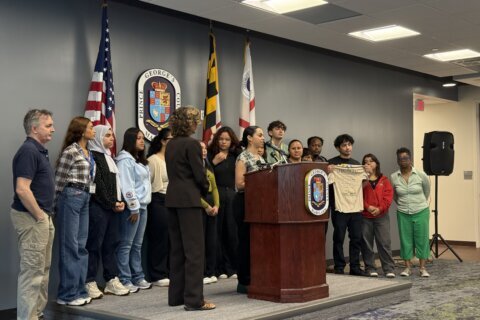Maryland, along with other states, can expect to shoulder more of the impact from hurricanes and other natural disasters, and it’s going to have to do it amid federal cuts.
That’s what Maryland Department of Emergency Management spokesman Jorge Castillo said since the Federal Emergency Management Agency has decided to slash staffing and grants under President Donald Trump’s administration.
Castillo was referring to the cancellation of the Building Resilient Infrastructure and Communities grants that would have provided funding designed to lessen the impact of floods and other natural disasters.
Castillo said the Atlantic hurricane season, which stretches from June 1 through the end of November, will be busy.
“We’ve heard a couple of predictions that this season is going to be above average in terms of producing more named storms and stronger storms,” so the agency is preparing accordingly, Castillo said.
In Maryland, hazard mitigation plans were included under the BRIC grants for Prince George’s, Anne Arundel, Garrett and Somerset counties. Baltimore and Annapolis would also have been provided funding for projects designed to prevent or minimize the damage from disasters.
On FEMA’s website, the BRIC grants were described as “wasteful” and “politicized.” Castillo said the grants, totaling about $150 million, provided a good return on investment.
By providing grants for programs, such as wetlands restoration or stormwater improvements, Castillo said it saves taxpayers money when storms come.
That’s when funding is needed for the cleanup, which can get expensive.
“You have to spend money moving people. You have to spend money building homes that have been destroyed by the flood, instead of spending money protecting” flood-prone communities, Castillo said.
He also said the grants were competitive, and the claim that they’re ineffective “ignores the fact that FEMA itself designed the program to be competitive, data-driven and cost-effective.”
Castillo said there are some potential workarounds for local governments.
“There is a Resilient Maryland Revolving Loan Fund that we have established, where localities can apply for a loan. Now the good thing about this loan is it’s at 1% interest rate,” which Castillo said can be used for a variety of projects.
While the state can step in on such projects, “we can’t do it all by ourselves,” Castillo said.
The cancellation of the BRIC grants, coupled with reductions by as much as 20% of the staff at FEMA, and the coming hurricane season, creates what Castillo described as this “perfect storm” of increasing the burden on state and local emergency management services.
“It is a tough time for us. It is a tough time in emergency management,” Castillo said.
WTOP reached out to FEMA for comment.
Get breaking news and daily headlines delivered to your email inbox by signing up here.
© 2025 WTOP. All Rights Reserved. This website is not intended for users located within the European Economic Area.








